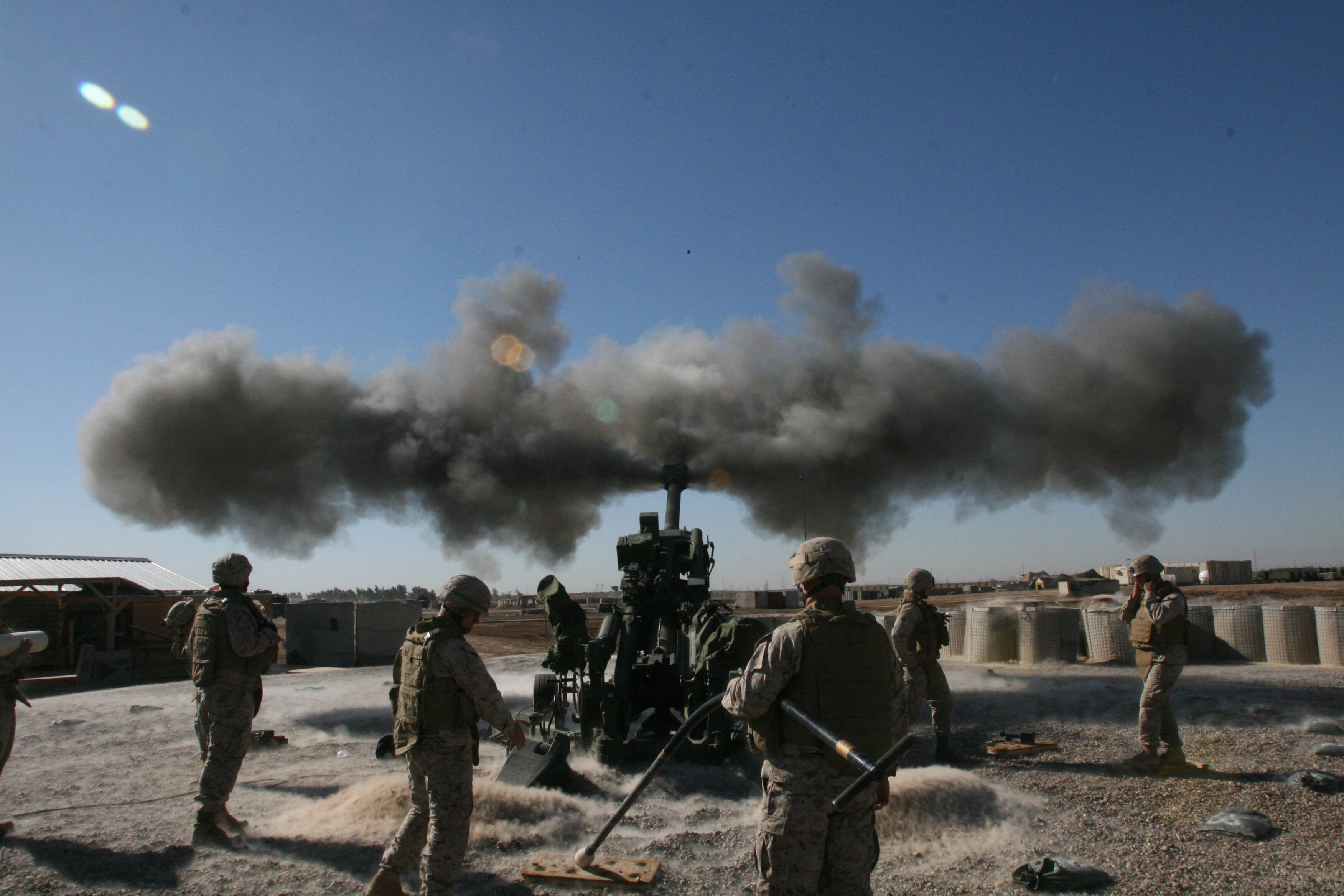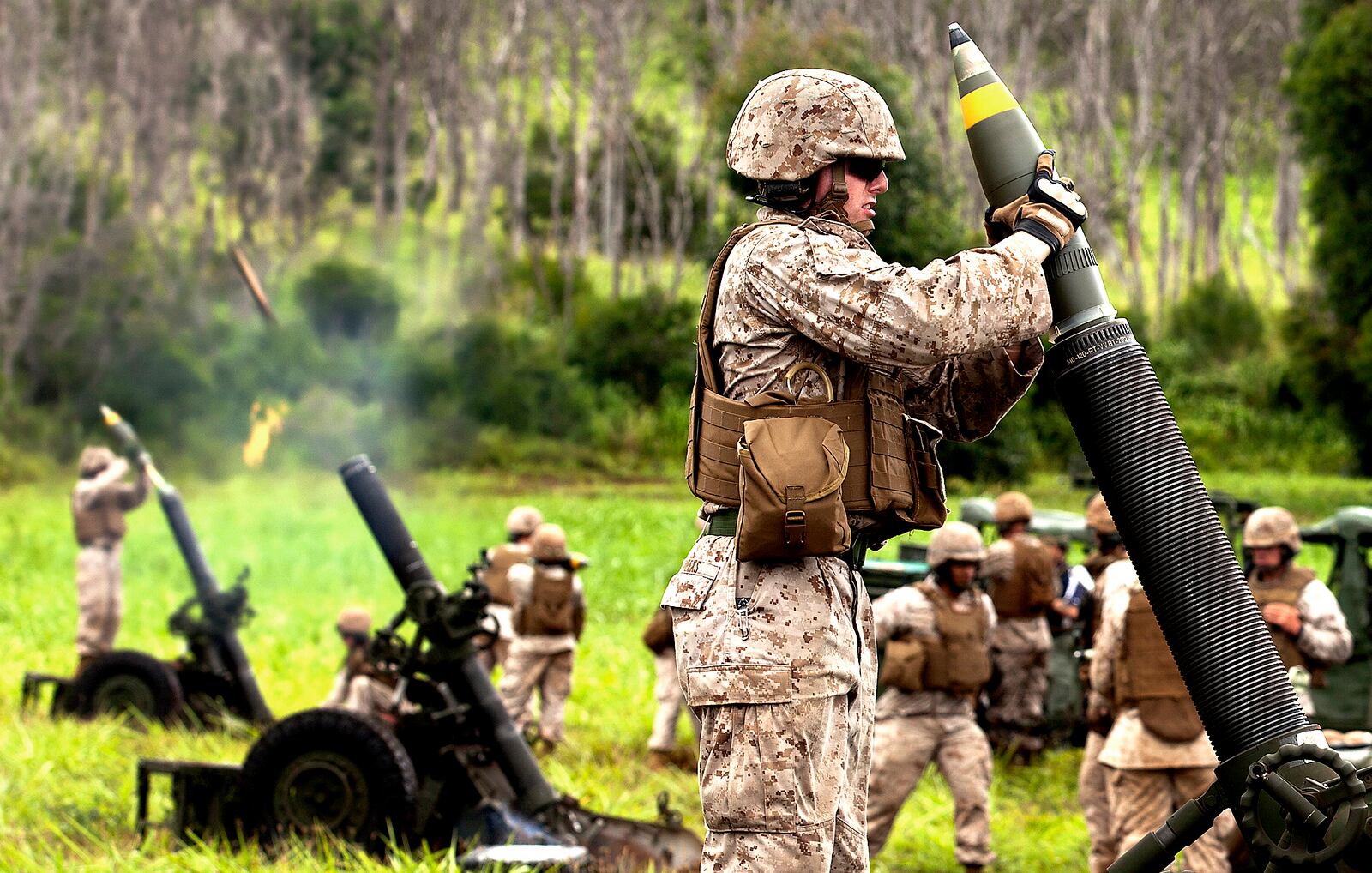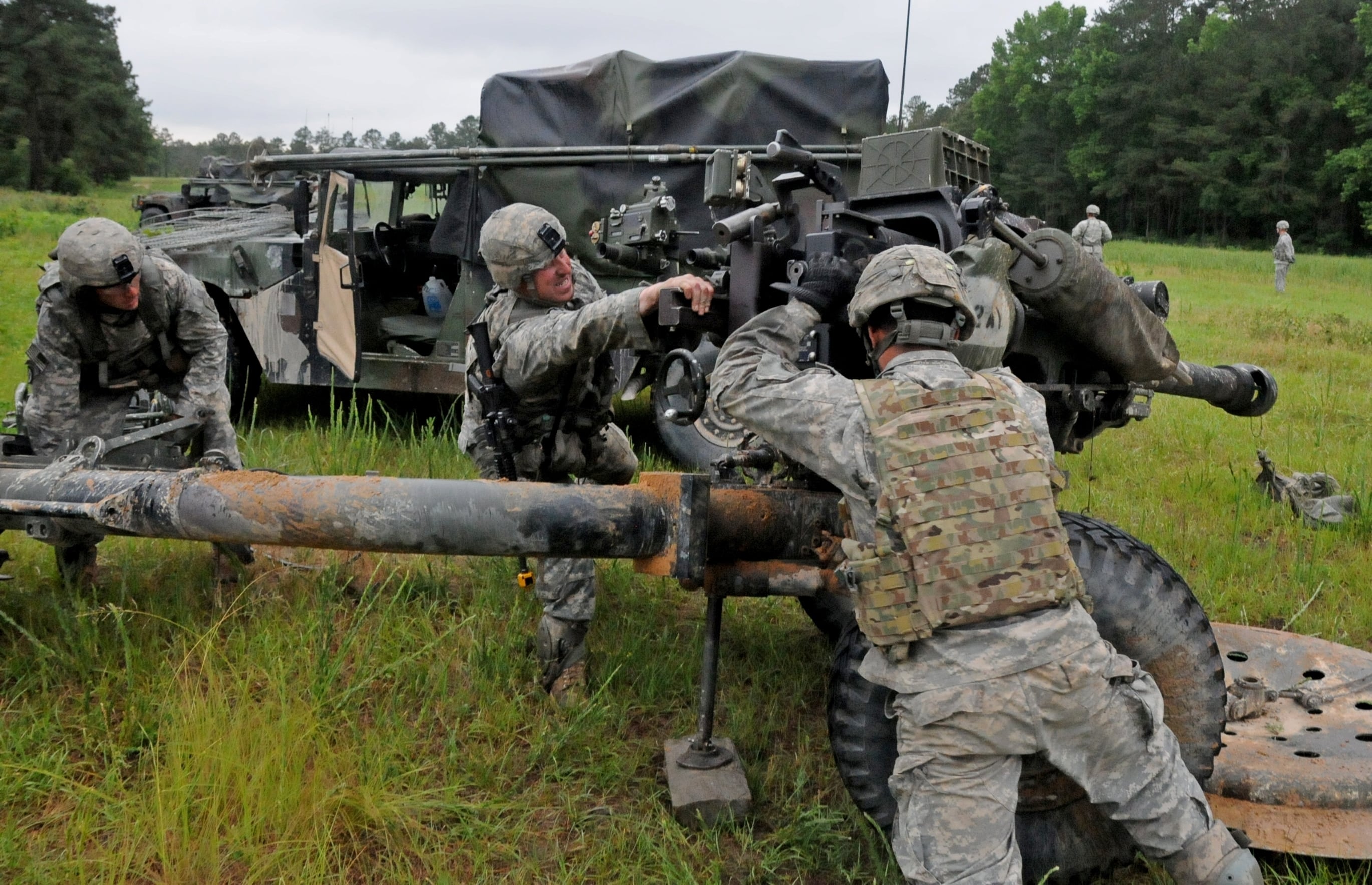The Marine Corps recently put pulled out three big guns (to include one from the Army) to the test — including one from the Army — in an effort to determine how best to support small teams of Marines operating alone on far-flung battlefields. how well the weapons fare in providing the integration of artillery in direct support of a Company Landing Team, and the ability to provide direct and indirect fire support as the company closed with enemy forces.
As Marines shift toward a post-war doctrine that focuses on company landing teams deploying independently for weeks at a time, Marine artillerymen are on the hunt for the best weapon that could support them. Since Marines could be operating without much logistical support, they'll need to travel light. But they still could require more firepower than they can carry on their shoulders, said Col. Jeff Holt, director of the Marine Corps Warfighting Lab's Experiment Division.
That means company landing teams the Marine Corps needs to must strike a balance between company landing teams being expeditionary and having the fire support they need to defeat the enemy.
Though not yet advocating task organization of the Company Landing Team, such teams would need to be scalable, according to Col. Jeff Holt, director of the Marine Corps Warfighting Lab's Experiment Division.
"We need to think outside the box what a company landing team is going to have," Holt said. "...They need more firepower than what we carry on our shoulders. In order to have that, yYou've got to have something wheeled in there that provides maybe direct and indirect fire."
The idea was driven by cannon-cockers from 10th Marine Regiment. Concerned that Marines could be sent out without all the firepower they need, Corps officials launched an experiment to test different systems that might support them.
The subsequent limited objective mid-December experiment was held in mid-December at Camp Lejeune, North Carolina, overseen by with oversight from the Marine Corps Warfighting Lab,. It put to the test the M777A2 155mm howitzer, the Expeditionary Fire Support System’s M327 120mm mortar, and the Army’s M119A3 105mm howitzer.
Leading the test were members charge was Marines of Lima Company, 3rd Battalion, 6th Marines Regiment. They were supported by roughly 50 members of Marines from 1st Battalion, 10th Marines.
The Marines team simulated an amphibious landing in distributed operations. They It secured a landing zone, then progressed toward an urban environment where they were it was met by a moderately equipped, near-peer threat of the same size.
There was plenty of hip shooting during the movement-to-contact; the howitzers defended likely avenues of approach with direct fire, and were tasked with quick switching ed to indirect fire support missions. It was essentially the same two-day mission repeated three times, once for each weapon system. The same Marines manned a two-gun ensemble for each event to remove crew variables.
Though the final report is not out, officials gave Marine Corps Times a sneak peek at the findings.
There was no clear winner or loser in Holt's eyes. The best weapon and ordnance for the job would be determined by the mission set.
Capt. Chris Parks, Lima company commander for 3/6, certainly had his favorite though. For indirect fire, "the 777 Is the way to go because it has a larger bang and a lot more range," he said. "The 105 isn't bad. The EFSS is a waste of time and money."
He was not a fan of direct fire with any system in a confined or urban environment, but saw potential in open area defense.
Here are how Marines say the weapons stacked up:
M777A2 155mm howitzer

Marines with 5th Battalion, 10th Marines fire a 155mm high-explosive round from the M777A2 howitzer in Iraq.
Photo Credit: 1st Lt. Barry L. Edwards/Marine Corps
Weight: 9,300 pounds
Maximum range: 24.7 kilometers (40 with Excalibur round)
Munitions: All current and developmental U.S. and NATO standard 155 mm projectiles and charges, including Modular Artillery Charge System.
Emplacement: Less than 3 minutes
Displacement: Less than 2 minutes
Rate of fire: Intense: 5 rounds per minute for up to 2 minutes. Sustained: 2 rounds per minute
Mobility: Towing vehicles: MTVR, FMTV, M800 and M900. Fixed wing: C-130, C-141, C-17, C-5. Rotary wing: CH-53E, CH-47D, MV-22.
Advantages: It has a range of 40 kilometers and is capable of firing M982 Excalibur ammunition. The Marines have great familiarity with the weapon system.
Disadvantages during test: It takes longer to set up and move than other platforms, which was problematic as the company tried to close with the enemy, Parks said. The 9,000-pounder, though lighter than some artillery pieces, makes delivery a challenge when space is limited.
Expeditionary Fire Support System's M327 120mm mortar

Cpl. Nathaniel Meeks, a cannoneer with 1st Battalion, 12th Marines loads a 120mm mortar round in the barrel of an M327 Towed Rifle mortar system during a fire mission at Schofield Barracks, Hawaii.
Photo Credit: Lance Cpl. Matthew Bragg/Marine Corps
Weight: 1,798 pounds
Effective range: 8.2 kilometers
Munitions: High Explosive (HE), smoke, illumination and practice rounds
Rate of fire: Intense: 16 rounds per minute for one minute. Sustained: 4 rounds per minute
Mobility: Top speed (paved roads) 65+ mph, operational range of 300 miles. Ammunition trailer can carry 30 mortar rounds. Rotary wing: CH-53E, CH-53K, MV-22.
Advantages: Most maneuverable of the three systems. The precision extended range munitions, or PERM, currently in production will double the range to 16 kilometers, and provide GPS accuracy well within 10 meters of the target.
Disadvantages: Reliability of the 1163 Growler M1163 Prime Mover, which Parkes referred to as the "clown car," has proven problematic. The mortar is not capable of direct fire support.
Army's M119A3 105mm howitzer

Army artillery cannoneers prepare to fire an M119A3 105mm howitzer during the first a readiness test at Fort Bragg, N.C.
Photo Credit: Capt. Joe Bush/Army
Weight: 4,200 pounds
Range: 14 kilometers (19.5 with rocket-assisted shells).
Munitions: High Explosive, HE rocket-assisted shells, illumination, white phosphorous smoke.
Rate of fire: Intense: 6 rounds per minute for the first two minutes. Sustained: 3 rounds per minute for 30 minutes.
Mobility: Can be air dropped. Slung by CH-47 Chinook, UH-60 Black Hawk, or MV-22 Osprey. Towed by armored Humvee and larger.
Advantages: Though not used by the Corps for some time, it was "a pretty easy transition for the Marines," Holt said. It was more maneuverable than the M777, and was set into direct-fire mode very easily.
Disadvantages: It does not exist in the Marine Corps inventory. There is limited range and ammunition compared to the M777.





